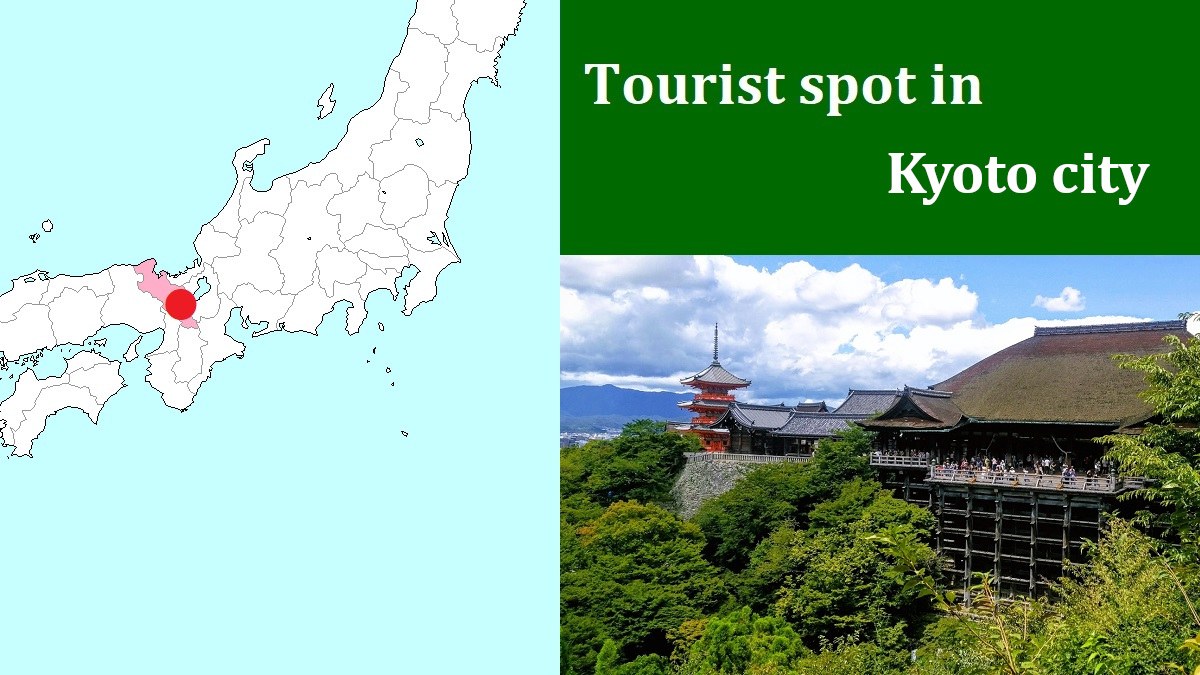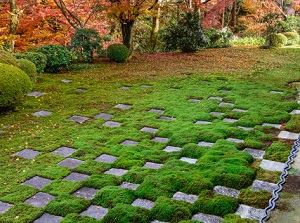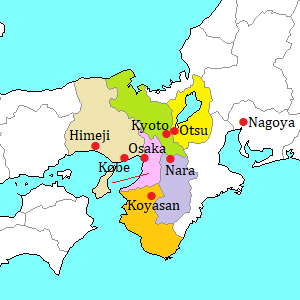Tofukuji temple [東福寺]
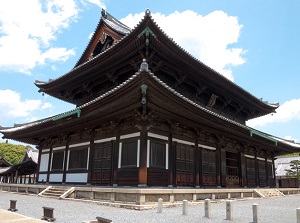
Hondou of Tofukuji
Photo by inariage.com
Tofukuji is a Buddhist temple of Rinzai Zen Buddhism, one of the three Japanese Zen sects, and is the central temple of a branch school of Rinzai sect.
"O" in the word is pronounced long, so it is read as "Tôfukuji".
It is located about 2 km southeast of Kyoto station, and Sanjusangendo and Chichaku-in are located about 1.5 km north of this temple.
Originally, a temple named Hosshoji was built in this site in 924.
In 1236, Kujo Michiie (1193-1252), who was the most powerful court noble attached to the Emperor, decided to construct a great temple enshrining a 15-meter-high Great Buddha statue.
The great Buddha hall was completed in 1255, and all buildings of the temple were completed in 1273.
For the name of this new great temple, he include two Chinese characters, "tô" in "Todaiji" and "fuku" in "Kofukuji".
(Both are the great temples in Nara city.)
So the name of this temple became "Tofukuji".
The huge Buddha statue was reduced to ashes by the fire in 1319, then it was recreated in the mid-14th century.
But the temple was destroyed by fire in 1881, and the statue was burnt away again.
At that time, only the left hand of the statue was rescued.
It is about 2 meters long and is enshrined in the main hall now.
The current principal image is a set of three Buddha statues, and they were moved and enshrined from Manjuji temple which is one of the branch temples in Tofukuji.
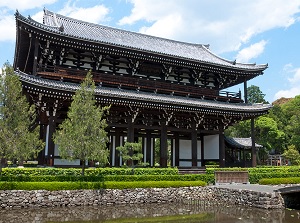
Sanmon of Tofukuji
Photo by inariage.com
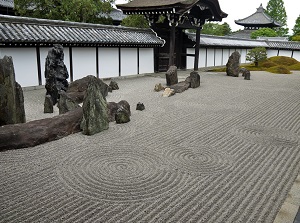
North garden in Houjou
Photo by Kyoto Free Photo
The site is about 350 meters from east to west and about 400 meters from north to south.
In the center of the precinct, there are big Sanmon gate (三門), Hondou [Butsuden] (本堂 [仏殿], main hall), Houjou hall (方丈) and some other buildings.
Sanmon was rebuilt in 1425 and is about 22 meters high..
It is the oldest gate of Zen temple in Japan, and is designated as a national treasure.
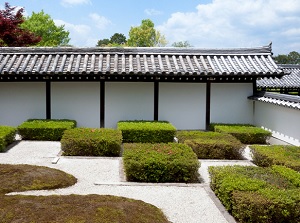
West garden in Houjou
Photo by inariage.com
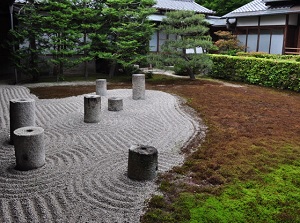
East garden in Houjou
Photo by Railstation.net
Hondou (or Butsuden) was rebuilt in 1934 after the destruction by fire in 1881.
The hand of great Buddha is enshrined in this hall.
Houjou was rebuilt in 1890.
Four gardens set up in the four directions of Houjou are very attractive.
These gardens were built in 1938, and each look of the garden is different.
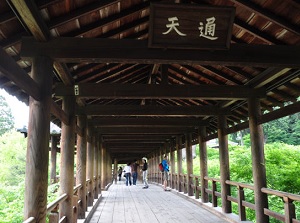
Tsutenkyo in Tofukuji
Photo by Railstation.net
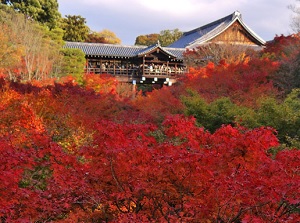
Tsutenkyo from Gaunkyo in autumn
Photo by Kyoto Free Photo
A small river flows from east to west on the north side of above buildings.
A lot of maple trees are along the river, so many people visit in the beautiful colored season in autumn.
And three wooden bridges cross the river.
Tsûtenkyô (通天橋) is the central bridge rebuilt in 1961.
It is on the corridor connecting Hondou and Jôrakuan in the north part of the precinct.
It is the best place that visitors can see the colored leaves.
Engetsukyô (偃月橋) is to the east of Tsûtenkyô.
It was built in 1603, and is designated as an important cultural property.
Gaunkyô (臥雲橋) is to the west of Tsûtenkyô, and is on the road running along the west side of the temple.
From this bridge, we can see the colored leaves and Tsûtenkyô.
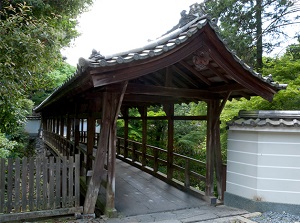
Engetsukyo in Tofukuji
Photo by inariage.com
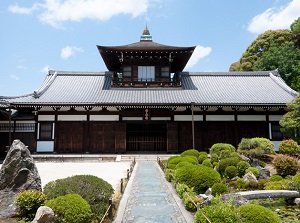
Kaizando of Tofukuji
Photo by inariage.com
Jôrakuan (常楽庵) is the north area of Tofukuji with some buildings, and a corridor connects Tsûtenkyô and Jôrakuan.
The central building is Kaizando (開山堂).
The building was rebuilt around 1826.
The part of second floor is small, so the style of the building is unique.
How to get here
By route bus, about 13 minutes from Kyoto station to Tofukuji stop.
About 11 minutes from Gion to Tofukuji stop.
Or, by JR Nara Line, about 3 minutes from Kyoto station to Tofukuji station (next station). About 10 minutes walk from there.
By Keihan Railway, the nearest station is Tofukuji or Toba-kaido.

